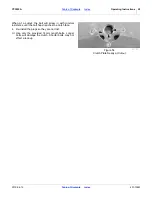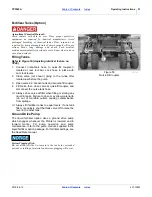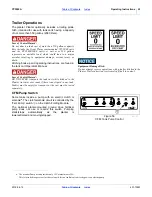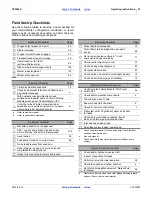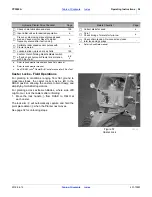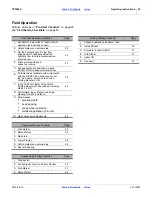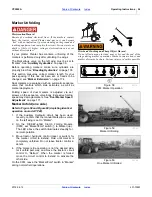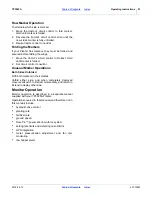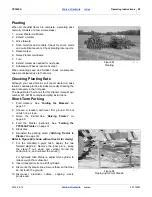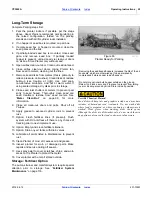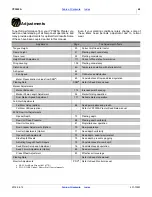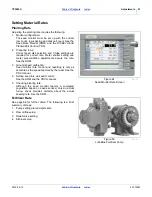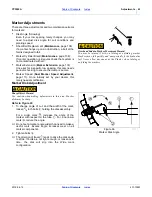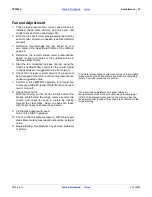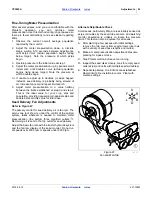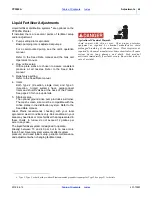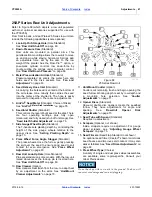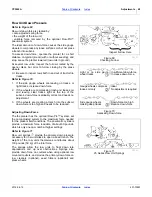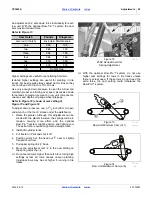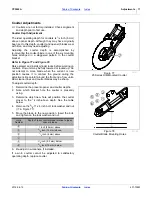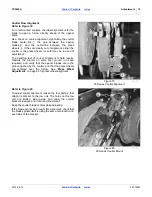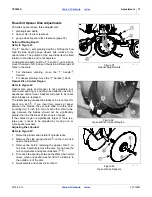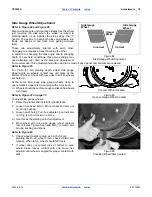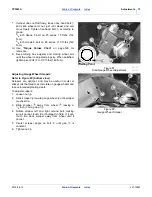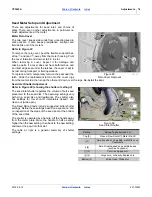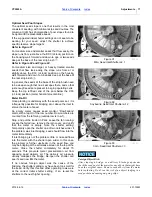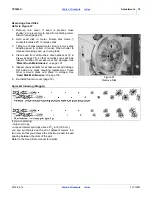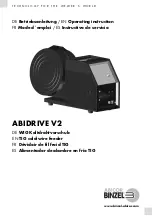
2019-06-12
401-705M
YP3025A
Adjustments
64
12. During the first pass, take note of the average
populations reported on the seed monitor.
If the reported population varies from your intentions
by a significant amount, it is imperative to perform a
furrow check. For serious rate variances, for which
the source of the problem and the solution are not
quickly determined, see “
If the population is only slightly low, the problem can
be skips (periodic empty disk pockets). If slightly
high, the problem can be doubles (period pockets
with double seed). An adjustment to the meter
pressurization may correct either condition (see
step 14).
13. Resume planting. During the next pass, note the
following two readouts on the seed monitor:
14. Skips:
If all else is correct, but overall average population is
running low (or there are gaps upon furrow check),
the cause may be seeds falling out of disk pockets
before delivery to the seed tube. Increase meter
pressurization to correct this. You can adjust meter
pressurization with the Planter in motion.
Press the “SPLIT AIR +” softkey on the seed monitor
console. Wait 5 to 10 seconds for the system to
update, while you continue planting. Continue
making small increase adjustments until the reported
population levels out at the target value.
15. Doubles:
If all else is correct, and the overall average
population is running high (or there are double seeds
upon furrow check), the cause may be two seeds in
some disk pockets at delivery to the seed tube.
Decrease meter pressurization to correct this. You
can adjust meter pressurization with the Planter in
motion.
Press the “SPLIT AIR -” softkey on the seed monitor
console. Wait 5 to 10 seconds for the system to
update, while you continue planting. Continue
making small decrease adjustments until the
reported population levels out at the target value.
Typical Location:
Item:
Screen 1, first row
above graphs
Average Overall Population
Typical Location:
Item:
Screen 1, 2nd row
above graphs
Minimum Row Population
Screen 1, 3rd row
above graphs
Maximum Row Population
Small seeds, such as Milo, may be under-reported. Use
the “
” below to verify
seed status at the disc pockets.
Furrow Check:
Expose several seeds in each of several rows, being
careful not to disturb their relative positions. Measure
and average the distance between seeds. Compare this
to the predicted seed spacing for the population in the
Seed Rate manual.
Any instances of no seed where expected may be a
sign of “skips”. Finding two seeds at the same spot is
clear indication of “doubles”
A small varying population deviation between rows is
normal; however, if a row is consistently running lower
or higher than the other rows, it could indicate a meter
or seed sensor problem that needs attention.
Population Troubleshooting Charts
Insufficient meter pressurization, or unusually rough
fields, can increase the incidence of empty pockets. Be
sure to rule out other causes (such as skipping chains,
meter starvation, incorrect meter disks) before adjusting
meter pressurization to reduce apparent skips.
The suggested increment of change is two presses of
the “SPLIT AIR” softkey, at the factory default value for
change increments.
Excess meter pressurization can increase the incidence
of doubles. Be sure to rule out other causes (such as
incorrect meter disks) before adjusting meter
pressurization to reduce doubles.

